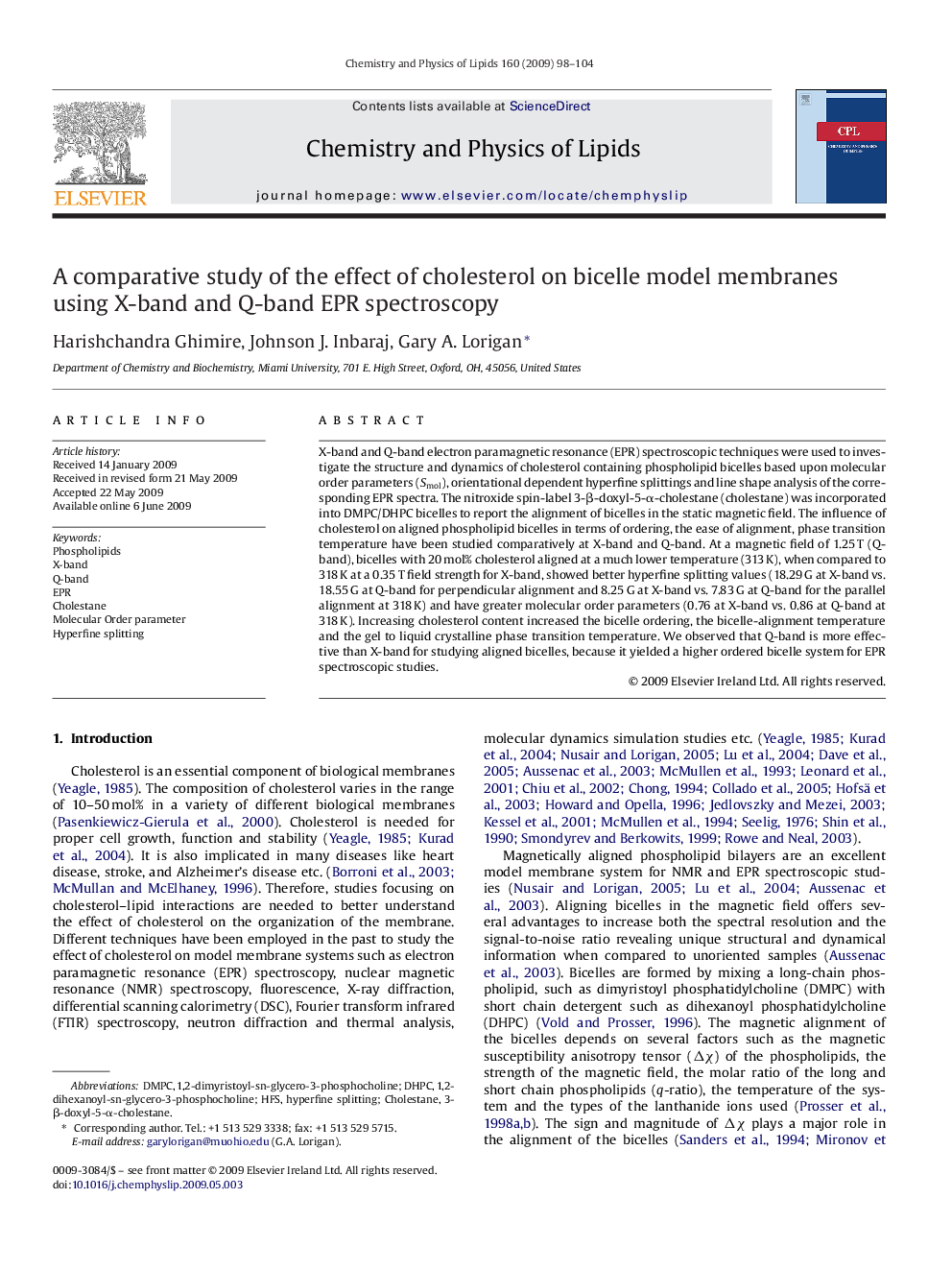| Article ID | Journal | Published Year | Pages | File Type |
|---|---|---|---|---|
| 1252341 | Chemistry and Physics of Lipids | 2009 | 7 Pages |
X-band and Q-band electron paramagnetic resonance (EPR) spectroscopic techniques were used to investigate the structure and dynamics of cholesterol containing phospholipid bicelles based upon molecular order parameters (Smol), orientational dependent hyperfine splittings and line shape analysis of the corresponding EPR spectra. The nitroxide spin-label 3-β-doxyl-5-α-cholestane (cholestane) was incorporated into DMPC/DHPC bicelles to report the alignment of bicelles in the static magnetic field. The influence of cholesterol on aligned phospholipid bicelles in terms of ordering, the ease of alignment, phase transition temperature have been studied comparatively at X-band and Q-band. At a magnetic field of 1.25 T (Q-band), bicelles with 20 mol% cholesterol aligned at a much lower temperature (313 K), when compared to 318 K at a 0.35 T field strength for X-band, showed better hyperfine splitting values (18.29 G at X-band vs. 18.55 G at Q-band for perpendicular alignment and 8.25 G at X-band vs. 7.83 G at Q-band for the parallel alignment at 318 K) and have greater molecular order parameters (0.76 at X-band vs. 0.86 at Q-band at 318 K). Increasing cholesterol content increased the bicelle ordering, the bicelle-alignment temperature and the gel to liquid crystalline phase transition temperature. We observed that Q-band is more effective than X-band for studying aligned bicelles, because it yielded a higher ordered bicelle system for EPR spectroscopic studies.
